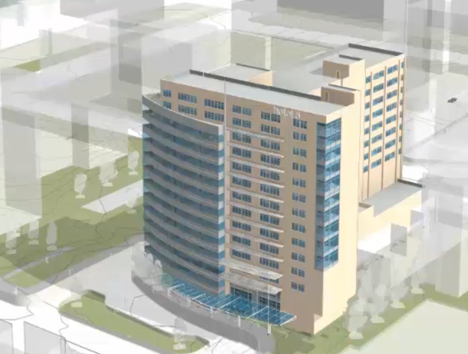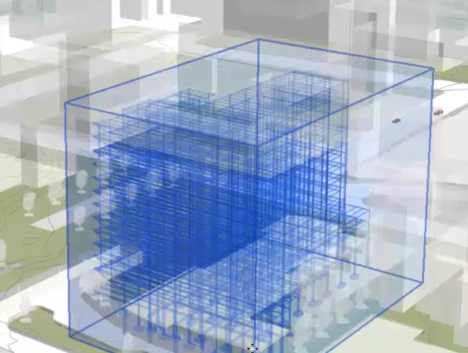Link various coordination models from local Navisworks files or from Autodesk Docs and manage them in the Manage Links dialog in Revit .
 Video: Use Coordination Models
Video: Use Coordination Models
This feature is useful for visual cross-checking between models of various disciplines and phases of a project. In 3D views, visually compare collaboration models created in Revit or other modeling tools for coordination purposes. By loading the updated coordination model on a regular basis (such as weekly), you minimize the risk of clashes. This practice can expedite the design process and reduce the need to make changes, saving time and money for the entire design team.

Coordination models
A coordination model is a 3D design used for virtual cross-checking of various disciplines through the design, pre-construction, and construction phases of a project.
Link Navisworks files (NWD or NWC file. NWD and NWC are native file formats of Navisworks. Project teams use Navisworks to combine multi-disciplinary design data into a single coordination model) from local paths as coordination models or link to file formats viewable in Autodesk Docs. You can link directly to views from Autodesk Docs without downloading the file to a local resource. Views linked from Autodesk Docs use permissions from the Autodesk Docs account to manage access, making it easier to use the collaboration workflow when IP protection is important. Coordination model views are lightweight representations that provide context for your Revit model.
Examples
- An architect uses Revit to design a building. A structural engineer uses another software product for the building's structural design. The architect wants to bring the structural design into Revit, using it as a reference to ensure that architectural elements align correctly with structural elements of the design.
- A designer fabricator uses a 3D modeler to design the exterior envelope of a building, using a complex system of curtain walls. The architect wants to bring this model into Revit, using it as a reference to make sure the building's interior design fits correctly within the envelope.
- An architect uses Revit to design a building. A civil engineer uses another software product for the detailed site design. The architect wants to bring the site design into Revit, using it as an underlay to correctly plan the layout of the building on the site.
Using the coordination model in Revit
When you link a coordination model into a Revit model, the coordination model displays in the current view. It is surrounded by a bounding box, which displays when you move the cursor over the coordination model. When you select the box, the status bar displays the family and type Coordination Model : Navisworks Model, followed by the model name. The Properties palette displays the file path, name, and other properties for the coordination model.

After linking the coordination model, you can do the following in Revit:
- Display the coordination model in 3D views and 2D views, including plans, elevations, and sections.
- Pin the coordination model to lock it in place, so it does not inadvertently move in relation to the Revit model.
- Define phasing for the coordination model.
- Define transparency for the coordination model to distinguish it from the Revit model. Use the Visibility/Graphics dialog to set its visibility and define transparency.
- For worksharing, add the coordination model to a workset.
- Print the coordination model as part of a Revit view.
- Export the coordination model to an image as part of a Revit view.
- Unload the coordination model to temporarily remove it from the model (for example, to improve performance). When you reload the model, it reloads to the same position and orientation.
- Reload the coordination model to reflect recent updates.
- Remove (delete) the coordination model from the Revit model.
Because textures are not included with the coordination model, it cannot be rendered as part of a Revit view.